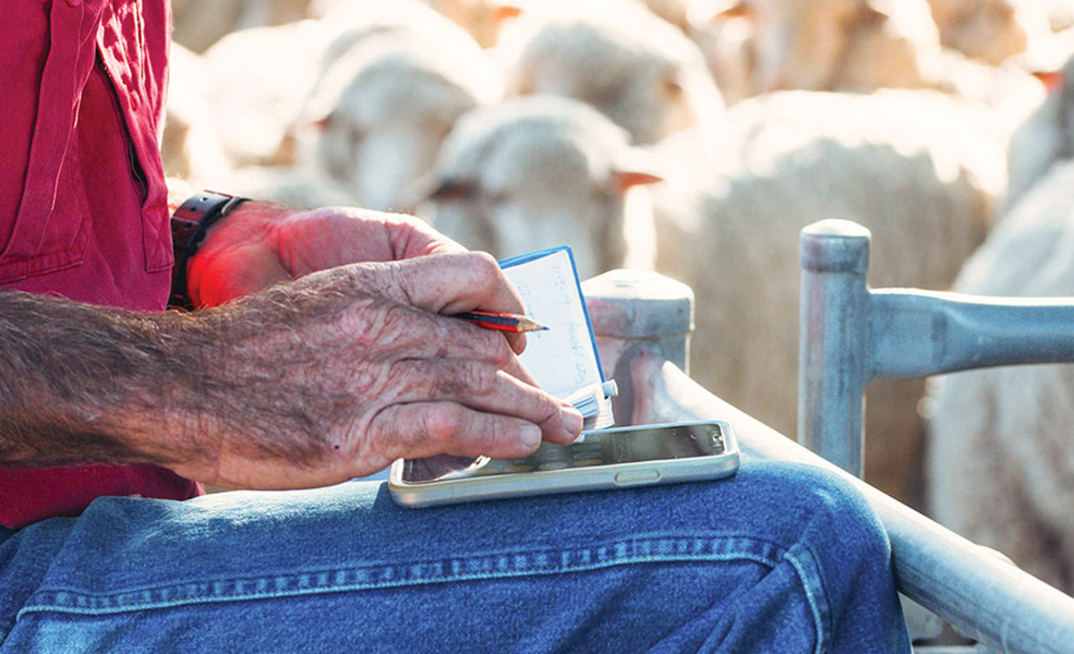Whether you're in town or the paddock mustering sheep, there are a few things you should know about how network coverage works and what happens behind the scenes to make that coverage possible.
You're able to do all the amazing things on your phone because of cellular signals beamed out of our base station towers situated around the nation.
You can see where this coverage is on our Mobile Coverage Maps.
Those towers operate on a variety of radio frequencies across several key pieces of radio spectrum. It's easy to think of it as just 3G, 4G and now the amazing 5G, but in actual fact, there are many different radio frequencies we operate on in those Gs to make your phone work.
Does Telstra take mobile coverage away?
No, we do not take away coverage. We have invested billions of dollars over the last few decades delivering Australia's best mobile network, from 1G all the way up to 5G and beyond.
As we grow our mobile network around Australia and upgrade it with the latest technology, we occasionally come to a point where it is necessary to say goodbye to older technology, and to use the spectrum bands it was carried on to boost the performance of newer and more efficient technology.
As part of our program to continually upgrade our network to the latest technology and expand our 4G and 5G coverage, we've announced the eventual switch-off of our 3G technology. This will not happen until June 2024.
We are working towards expanding the 4G technology, so its coverage is materially the same as 3G coverage today.
Telstra's 4G coverage is already greater that our 2G coverage and our commitment is for 4G coverage to be similar to our 3G coverage by mid-2024.
How does the use of different spectrum bands affect coverage?
Spectrum bands vary in terms of how far they travel, and the bandwidth which is available for use by mobile operators. Our 3G technology uses 850MHz spectrum while the primary band for our 4G technology is 700 MHz. Both 700 MHz and 850 MHz are known as ‘low band' spectrum and they travel further than ‘mid' and ‘high' band spectrum.
The propagation of 700 MHz is slightly better than that of 850 MHz, and as 700 MHz will be used for our 4G expansion we do not anticipate there being any material changes in coverage due to the change in spectrum used.
How available will 5G be in regional areas?
Our 5G coverage is already available in more than 100 regional towns and this footprint will increase with time. You can check Telstra's coverage availability for each generation of mobile technology on our website.
How far does a phone work from a base station?
There is no fixed answer to this as it depends on a number of factors.
A lot of it depends on the phone you're using. All phones differ in the way they pick up signal, and some perform significantly better than others.
We do a range of testing and discuss signal characteristics of new phones before they're released by manufacturers.
The devices that perform best in testing are certified as Blue Tick devices, and these are considered the best devices for getting handheld voice coverage in regional and rural areas. It is testing done exclusively by our engineers to perform best on our network, so you won't find it anywhere else.
The accessories you're using with your phone can also make a difference. If you have your phone plugged into a powered external antenna, you can expect better results. If you're using an approved device like a Telstra-Go Repeater, you'll have better results. Coverage can even depend on how you hold your phone.
The rest depends on geography. All of these factors and more can contribute to your mobile coverage experience.
How and where are new base stations built?
A base station is typically a connection to our broader core network via a super-fast fibre connection. It takes a lot to run the fibre to each individual base station and connect it to the rest of our network, which is why these costs can be considerable.
It's not always as simple as building a huge base station on top of the biggest hills in the country. Not only is it not feasible, we need to get access to land, fibre and power for the site.
We also need to consider where the majority of the base station's users are going to be situated, and how the coverage will fan out over the geography of the area.
Aside from building new towers, we also do a considerable amount of work maintaining, improving and upgrading our existing base stations.
Should I "lock" my phone's frequency?
We have heard instances where customers have been advised to "lock" their phone to a specific frequency that they have successfully connected to in the past. This is where you tell your phone to look for one frequency only, as opposed to taking advantage of the multiple layers of frequency that make up our network.
Doing this can severely degrade your experience on our network, and it's advised you leave it to ‘Automatic' in your settings on your phone.
How can I make my phone work better in my house?
Connecting your smartphone to your home Wi-Fi network is a great way to improve your in-home experience. It's all thanks to SMS and Voice Over Wi-Fi enabled on our network.
SMS over Wi-Fi means that when your phone is connected to a Wi-Fi network that can access the internet, you'll still be able to receive SMS messages even if your phone can't connect to our mobile network.
You can also look at installing what's known as a Yagi antenna on your house to improve your reception.
I'm on another carrier that uses the Telstra network, how does that affect my coverage?
We have a range of deals in place to provide our mobile network to other carriers as part of a commercial arrangement. However, these arrangements do not make our full suite of network technologies available to these Mobile Virtual Network Operators (MVNOs).
To check what services are available on your carrier, contact your service provider's customer support.
Why does my phone drop out in the car sometimes?
There are several reasons why a phone call may drop out.
If you're taking a call on the go and it drops out, it may not be the network. It may be where you have the device situated in the vehicle.
Your phone should always be in a clear spot when you're making a call. Instead of jamming it deep in your car's centre console inside what is ostensibly a thick metal box, pop it into a cradle mounted to your window. That way, your phone has the best chance possible of reaching the network and vice versa.
Check the relevant laws in your state about using a smartphone in a cradle while driving before doing so, as in some states you may not be legally allowed to do so.
More information:
ABOUT THIS COMPANY
Telstra Australia
The Telstra mobile network reaches further, runs faster and works better than any other.
HEAD OFFICE:
- 242 Exhibition Street, Melbourne, Victoria, 3000, Australia
- Website: www.telstra.com.au/
- Phone: 132000
























